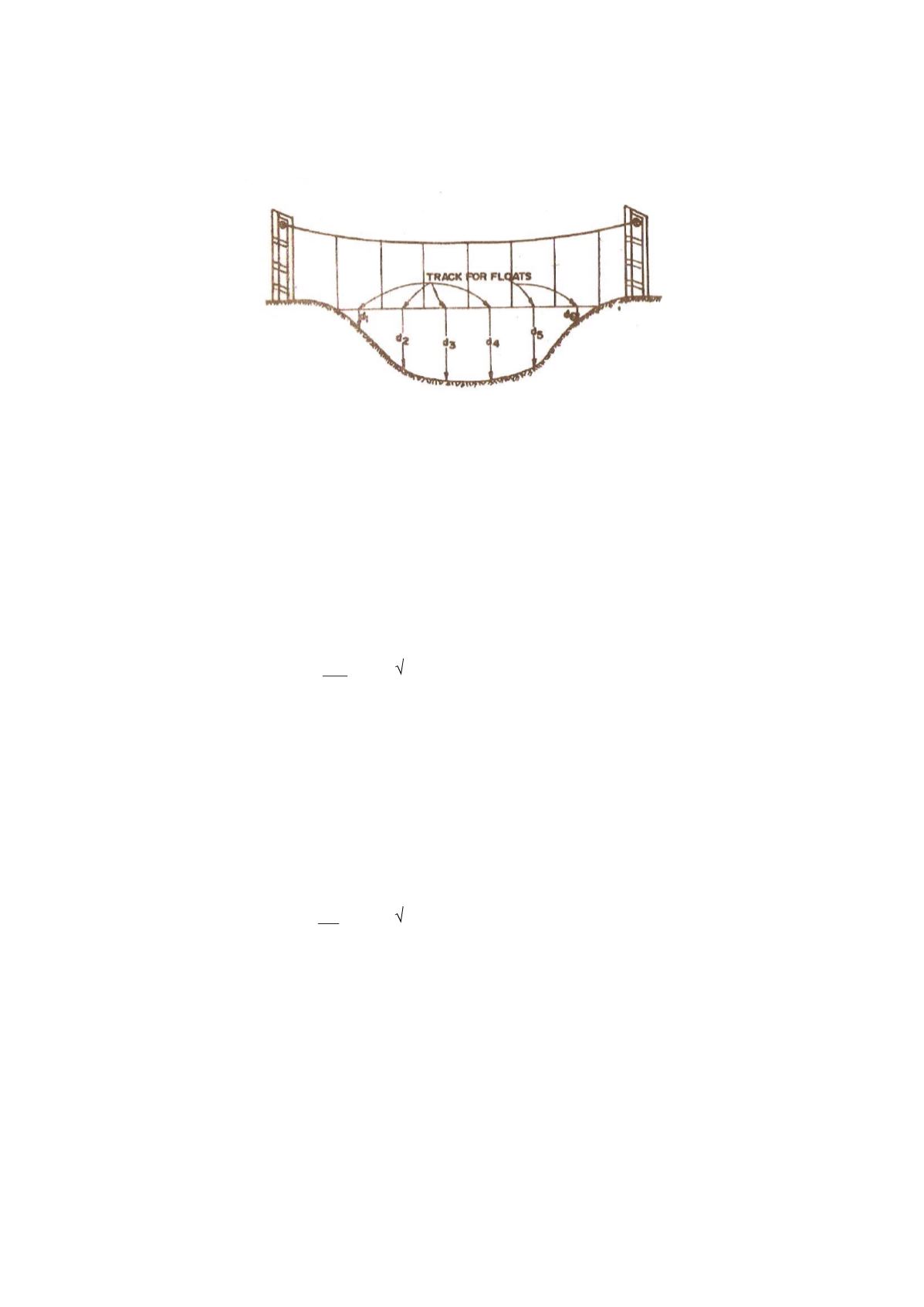
38
Fig. 3.3 : Measurement of Area
(After Punmia et al, 1992)
Measurement of Discharge
Weir Method
V-notch is the most popular method for measuring the discharge through a
flowing channel, which should be smooth and free from any disturbances. The
notches are cut from thin metal plates and water is allowed to flow over the
crest. This method can be used when the head is more than 6cm and
maximum discharge is within 1.25 cumecs. The discharge Q for the V notch is
calculated from the following equation : (Source : K.R.Karanth, 2004)
Q = 8 Cd. 2g.
tan
Ø/2. H
5/2
15
Where H = Head over the notch sill
Ø = angle of the notch at the centre
g = Acceleration due to gravity
= 9.8` m/sec
2
cd = Effective discharge co-efficent, the values of which
depend on the shape of the crest.
For 90
0
triangular (V notch), the equation becomes :
Q = 8 Cd. 2g. tan.45
0
. H
5/2
15
= 2.36 cd. H
5/2
Often calibrated V-notches are used in the field to read directly the
discharge.


